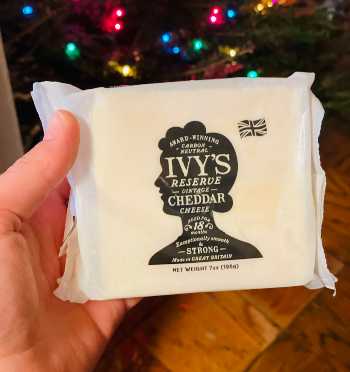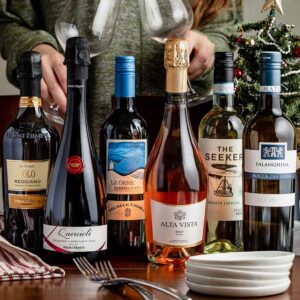[ad_1]
Back in the 17th century, the coupe might’ve been an elegant vessel for serving Champagne, but it’s a terrible glass for enjoying cocktails. Now, before you throw your autographed copy of “Cocktail Codex” at me and cry heresy, just hear me out.
It’s easy to forget that there was a time not too long ago when we didn’t have to handle every shaken and stirred cocktail from a chalice like it was the holy grail. It was a simpler time back then — we never worried about some mustachioed mixology prodigy making us feel like a donkey when we asked for a Martini on the rocks or smirking when we didn’t have a gin preference for our G&T.
It’s worth noting that before the cocktail renaissance took hold in the early aughts, coupe glasses were all but extinct. They may have been chic among the ladies who lunched in the ‘50s, and a few pioneering mixologists like Dale DeGroff in the ‘80s may have championed them (along with the Nick and Nora glass), but otherwise the glass had mostly disappeared up until 20 years ago. Having worked in the New York City restaurant industry since the late ‘90s, I can attest that it wasn’t until the arrival of Angel’s Share and Milk and Honey, two groundbreaking cocktail bars, that coupes exploded in popularity. Today, its primacy as the dominant cocktail vessel is accepted with almost religious, cult-like devotion. But it shouldn’t be.
Don’t Miss A Drop
Get the latest in beer, wine, and cocktail culture sent straight to your inbox.
I’m not arguing that the glass isn’t elegant. Romantic myths suggest that the coupe was originally designed to emulate the shape of a woman’s breast, perhaps even Marie Antoinette’s. However sexy these stories may be, they’re also likely untrue. In the modern era, the flute supplanted the coupe as the preferred vehicle for Champagne, as it was deemed superior at maintaining its precious bubbles. As of late, flutes have fallen out of favor, with many sommeliers preferring white wine stems for serving sparkling wines. Meanwhile, coupes continue to dominate the cocktail kingdom.
Not every notable bar uses them, though. At Amor y Amargo in New York’s East Village, you’ll never see a coupe glass sitting atop the bar, though it’s primarily due to spatial constraints. According to one of the bar’s owners, Sother Teague, the 240-square-foot space has only ever used two styles of glasses: a 6-and-a-half-ounce single Old-Fashioned glass and a 9-ounce water glass. It helps that the bar only serves stirred bitter drinks (its name translates to “Love and Bitter” in Spanish) because there isn’t adequate shelving and storage space for delicate stemware. Everything is either served on the rocks or down like a Sazerac. “Personally, I never use coupes in any of my spots,” Teague says, “I prefer a Nick and Nora.”
Recently, I enjoyed a delicious egg white cocktail called the Perilla Fizz at New York’s outpost of London’s Hawksmoor, a shaken drink that was served in a tall 8-ounce tumbler that looked like a shrunken Collins glass. The cocktail was dry shaken and strained through a sieve, revealing a lovely head of foam like a well-drawn Guinness. I reveled in not having to worry about a nose full of cocktail meringue or my drink toppling over every time I lifted the glass, as would’ve been the case if the drink was served in a coupe. But having it served “down” — industry lingo for when a cocktail without ice is served in a stemless glass — was an unexpected but welcome relief. (I understand that fizzes wouldn’t traditionally come in coupes, but there is simply no reason that other shaken drinks can’t be served similarly.)
“I think the coupe getting big from 2000 onwards was in response to the V-shaped Martini glass being the symbol of the ‘80s and ‘90s, and in general, bad drinks,” says Adam Montgomerie, Hawksmoor’s bar manager, who moved from London to open the New York restaurant. “The coupe had that vintage feel, which gave it a nice tie-in to the speakeasy bar that was a huge part of the cocktail revival in the ‘00s.” Montgomerie doesn’t mind coupes, but prefers serving Hawksmoor’s “Ultimate” Martinis, Manhattans, and Gibsons in Nick and Nora glasses, which he believes are better at keeping the cocktails cold from start to finish.
Teague suggests that the sustained popularity of coupes may also be driven more by market conditions and the supply chain than deep affection within the bar community for the glass itself. There simply aren’t many readily available alternatives that work for most high-volume cocktail bars. Durable coupes are simply easier to find than other stemmed glasses like Nick and Noras, Teague says, and are often much more reasonably priced.
Notwithstanding price and durability, let’s consider a few of the ways that the coupe sucks as a cocktail glass. First off, it’s ergonomically terrible. The coupe’s top-heaviness makes it unstable and awkward to drink from. How often do you find yourself staring at the meniscus on the top of your drink in a coupe glass petrified to move the vessel a millimeter because you know the slightest touch will cause the drink to spill?
In a recent Instagram video, Leandro DiMonriva, also known as The Educated Barfly, demonstrates a classic cocktail called the Quaker from Harry Craddock’s “Savoy Cocktail Book.” After he strains the drink into a coupe and raises it to his mouth, it spills out so badly that you wonder if the Quaker may have caused a tremor. Maybe you won’t be bothered when a full ounce of your $20 mezcal Aviation riff with acid-adjusted lemon and house-made crème de violette splashes onto the bar top before you even take a sip, but I sure am.
Having to balance a thin stem carrying an ungainly goblet full of liquid is a totally unnecessary cognitive challenge to ask of bar patrons who simply want to enjoy a drink. Like a field sobriety test, drinking from a coupe also doesn’t get any easier the more drunk you get. At least in medieval times, you could cup your chalice with two hands, and you wouldn’t feel out of place. Now you’d look like a teething infant with a baby bottle nursing your Vieux Carré. Not a good look.
Speaking of infantile behavior, maybe I’m being too much of a baby for whining about coupe glasses. I don’t expect to convince too many aficionados to embrace my opinion. While I desperately try to nudge Amor y Amargo’s Teague into admitting that coupes are garbage over the phone, he politely cites a passage in his friend Jeffrey Morgenthaler’s book “Drinking Distilled” that says: “If you can’t use a stemmed wine or cocktail glass without spilling your drink everywhere, you should go home and practice.” I get quiet on the phone, feeling a bit defeated. “This is a skill you should have learned in college,” Morgenthaler writes. I’m sorry, Jeffrey, I guess some of us were drinking too much beer back then.



![All Things Fall: Noble Oak’s 6 Best Whiskey & Autumnal Activity Pairings [Infographic] 6 noble oak infographic google](https://ny-foodie.com/wp-content/uploads/2024/11/noble-oak-infographic-google-796x445.jpg)





